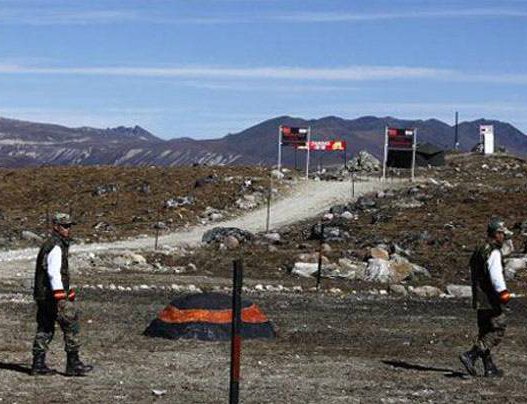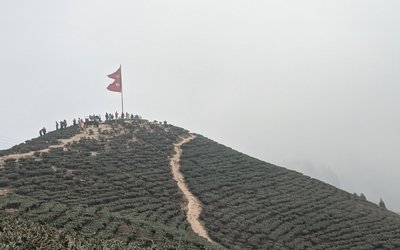
The geopolitical and geo-economic environment in the Himalayan region post-COVID-19 must be well analyzed and evaluated to give course to effective diplomatic management considering that Indo-Sino and Indo-US relations are constantly changing. At the country level, if we reference Nepal’s Foreign Policy in the 1950s, it is evident that regional evolution such as India’s independence and Chinese annexation of Tibet has played a major factor in determining Nepal’s and the Himalayan course of politics and such affairs will continue its influence. The border boundaries adjoining China along the Himalayas will, therefore, continue to be a matter of concern to both China and India and the five states that border both the powers including Nepal. These concerns are also likely to escalate because of what is happening at a more macro level. The focus of the US defense forces in the region, the building up of the Chinese defense assets along its Tibetan plateau, and India’s ‘Neighborhood First’ and ‘Act East Policy” are all indications of a larger power game comprising the competition between the two largest economies of the world. Therefore, the upcoming geopolitical evolution of the Himalayan region is an important area of concern.
Five policy documents of the US, the 2017 National Security policy, 2019 Indo-Pacific Report, National Defence Strategy, Policy of South Asia, Nuclear Posture Review, Impact by the “Good Agreement” of Afghanistan evidently reveals and delineates the responsibility in the Indo-Pacific region.
To highlight a few the US is strengthening security arrangements through partnership and alliance with nearly all the nations on China’s borders like the QUAD arrangements aiming to establish an “Arc of Democracy” envisioned to include central Asia, Mongolia, the Korean peninsula and other strategic alliances and measures with almost all the nations in East and Southeast Asia. The South Asia Policy calls upon India to increase its investments in Afghanistan and take a more active role as a partner in the region. US positions “competitive diplomacy” with larger use of economic tools like “fair and reciprocal” trade agreements and sanctions, the economy is composed of the US National power and China and Russia as competitors that have emerged to “challenge American power, influence, and interests. President Donald Trump tweets that the US is ready to mediate between India and both Pakistan and China whenever there are hitches in diplomatic behavior between China and the South Asian nuclear states. Time and again Trump does express his proximity with India and calls Prime Minister Modi a really good friend. In terms of global diplomacy, the Ministry of External Affairs, India affirmed the ‘elevation of ties with the US’, including joint rallies by Modi and Trump in Houston and Ahmedabad and defense cooperation. Trump postponed the G7 summit scheduled in June and plans to invite Australia, India, Russia and South Korea. Britain proposed G7 plus Australia, India and South Korea making it ten nations of democracy or D10, which is yet another move to oppose China and to break the monopoly on 5G.
Geo-strategic picture of China and South Asia
When the world and the accountable leaders are equally responsive to addressing COVID-19 so is the momentum of Cold War 2.0 revamping. China espouses policies to internally harmonizing its society and externally promoting a peaceful international environment in South Asia. China seeks to avoid unnecessary international confrontation distinguishing as a responsible world leader and put emphasis on soft power. The Sino-Indo relationship is shaping with cooperation, competition and confrontation.
Highlighting few occurrences that were visible are the Doklam dilemma that lasted for 73 days in 2017, 5 Aug Revoking of Article 370 and 35A of the Constitution forming two union territories of Jammu and Kashmir and Ladakh, as of 5th May China and India’s actions in the Borders in Pangong Lake, Ladakh, face-offs are ongoing at multiple locations in Eastern Ladakh along the Line of Actual Control and Nathu La Pass, Sikkim. The militarization and development of infrastructure by both China and India is the impetus. The recent surfacing of the border dispute between Nepal and India in the strategically militarily vital ‘Kalapani Area’ is another case in point of the importance of the Himalayan region. The Nepal-Indo relations have strained between the South Asian neighbors with centuries-old historical, cultural and economic ties, it also has brought the political parties together in an uncommon demonstration of unity. After the Doklam incident China and India worked out two rounds of talks between the Head of States in Wuhan, China and Mamallapuram, India also known as the ‘informal China-India summit’. India’s vital strategic role is visible time and again stressing on “Act East Policy”, “Look West Policy” and recently “Look Far East Policy”. The “First neighborhood policy” is unfinished. India is more inclined to “strategic rebalancing approach”.
China’s geopolitical theory the “String of Pearls” and economic expansion and political influence through the Belt and Road Initiative (BRI) is also cultivating in South Asia, which traditionally used to be India’s area of interest and influence. China is revolving South Asia as a bridge to the Indian Ocean. China’s interests include the 1.6 billion markets that South Asia possesses and an alternative and comparatively short route to both Tibet and Xingjian provinces. Even if the BRI covers Eurasia, Central Asia; of the six corridors, the projects Nepal encompasses north to south, the China Pakistan Economic Corridor and Bangladesh-China-India-Myanmar Economic Corridor (BCIM EC) is of geostrategic concern to the only global power the US and the middle powers in the Indo-Pacific region.
Why is the Himalayan Region even more significant?
A geopolitical narrative assumed in the power competition, cooperation and confrontation between China, India and the US in South Asia and the Himalayan region. Though the Arc of the Himalayas is 2500 km the five countries bordering distance is more than 5800 km and China borders every part of them. Afghanistan has 76 km, Bhutan 470 km, India covers more than 3500 km, Nepal 1414 km and Pakistan 523 km. China and India’s rise and influence is leading to geopolitical and geo-economic stimulus in the South Asian region. The militarization of the Himalayas can be an example of the two powers' interests being more political with risks of threats in defending the Himalayan region. For China, the province of Xinjiang, Tibet and Yunnan alongside the Himalayas is, in the same way, imperative for stability. China’s peaceful rise and sometimes referred to as peaceful development is an official principle for countering ‘China’s threat theory’. China has become apparent as political, economic and military power and ensuring to nations in South Asia that its augmentation will not be a menace to peace and security.
Nepal is hands-on with nationalism and extra-regional and regional influences on national politics. The ruling Nepal Communist Party is consolidating the major transformation to–federalism, republicanism and secularism. Nepal’s stretch of 1414 km is also a very sensitive and perceived as a probability of threat to both China and India. Nepal stood as the buffer, but the opening and the likelihood of the strategic connectivity with air, land and train from the Himalayas to the borders of India and the trends of geopolitics will put up with regional linkages which will uphold security, diplomatic, economic and political consequences. Though all six mountain passes from China to Nepal are vibrant and strategically promising the Kalapani area which is 416 km to Delhi located at the North-west end and easternmost Olanchunggola is 41 km to the Siliguri Corridor known as the Chicken Neck of India. Both these areas are the only two districts that border both China and India. Siliguri in the state of West Bengal is a vital intersection that connects Bhutan, Nepal and Bangladesh. Darjeeling hills, North-east India and Sikkim are equally imperative. The two tiny Himalayan South Asian nations Bhutan and Nepal along the Himalayas and the northeastern parts of India also known as the seven sisters are the most important strategic constituent in South Asia.
Kathmandu from Rasuwagadi is 70 km and Kathmandu from Khasa is 71.4 km both located at the center of the Nepal from the Chinese border. Of the strategic networks, the Koshi corridor Kimathanka-Jogmani, Bihar is 367 km. Kali Gandaki corridor is 435 km from Korola to the Uttar Pradesh and the Karnali corridor from Jamuna Hilsa to Dhuliyabit, Uttar Pradesh is 403.52 km.
The protocol on transport and transit agreement allows Nepal to use four seaports and three dry ports in China. These corridors is hoped to enhance economic activities but as confrontation is evolving between China and India also will bear security ramification.
China has stretched out bilateral and multilateral associations with Asian states particularly Bangladesh, Myanmar, Nepal, Pakistan, Singapore, Sri Lanka, and Thailand in respects of economy, political and military cooperation indicates the strategic shifts of China. President XI’s visit to Bangladesh in 2016 and Nepal in 2019 turning the relationship to strategic cooperation also adds to the interests south of the Himalayas. All these countries lie on the Himalayas or along the Indian Ocean. An inclination to ideology is not concerning to China though XI’s thoughts and party relationships are being promoted. The viewpoint of working with the day to day government achieving one thing at a time is the philosophy.
The argument is if China will come as a contributor while Indo-US strategic cooperation comes up with allies and partners to isolate China.
Conclusion
The China-US standoff is mounting over an array of issues in almost what we can refer to as the restoring of Cold War 2.0. Here, India will play a crucial role either through direct engagement or a balancing role. With China’s economic, security and political influence growing in South Asia a nationalist emotion over traditional regional influence will rise in India. This may add up to expressions of involvement in the new Cold War as India has enormous advantages including geo-location, various economic and security capabilities. This will also raise fundamental arguments over traditional order in South Asian finding a new normal.
Nepal’s role in the midst of an evolving south Asian region is crucial as it encompasses 1414 km of border between the region and Tibet of China. The realignment of strategic networks across the Himalayan region that join China and India may also bring Nepal’s buffer role under further analysis. Nepal’s foreign policy with non-alignment and peaceful co-existence at its heart will have to be further analyzed as well. Here, all conditions on which our policies lay, including the end of World War II, the revolution in China, and India’s independence will be overridden by new events.
Also, a grave matter of concern will be whether nation-states in the Himalayan region embracing its unique nationalism, foreign policy of isolation, border disputes, strategic connectivity, and power contentions may fall into what we may refer to as the Thucydides trap(?)
Basnyat is a strategic analyst and a Maj. Gen. (retd) of the Nepali Army

Binoj Basnyat
Basnyat is a retired Nepali Army Major General, is a political and security analyst
- Russian Aggression In Ukraine And Outcome In South Asia
- May 05, 2022
- The Nepal Opportunity 2079
- Feb 04, 2022
- Change Of Guards Part -II
- Jan 07, 2022
- How India Lost Post 12-Point Agreement
- Dec 29, 2021
- US Troops Withdrawal From Afghanistan And Implication To South Asia
- Jul 31, 2021
















